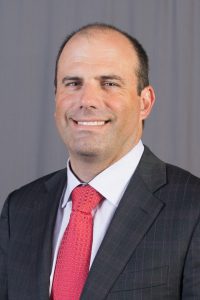
Professor Robert Heath
Wedged between microwave and infrared waves on the spectrum are millimeter waves (mmWaves). These tiny wavelengths are about the size of a pencil point. However, mmWaves are packed with high bandwidth channels, leading to limitless opportunities for high-speed broadband applications.
For several years, researchers have discussed the possibility of using mmWave to usher in a new age of mobile wireless communications – 5G. MmWave networks are different than those at conventional frequencies, due to different propagation characteristics and hardware limitations. However, as research grows and technology improves, 5G becomes a very real possibility, and the value of mmWaves expands to other wireless applications.
As a part of the 2017 Dean W. Lytle Lecture, University of Texas at Austin Cullen Trust for Higher Education Endowed Professor in the Department of Electrical and Computer Engineering Robert Heath will explore mmWave communication as an incubator for the rebirth of wireless communications.
“Millimeter wave imaging enables larger bandwidth, which leads to higher data rates,” Prof. Heath said. “This makes anything you want to do with wireless happen faster, from faster file downloads to quicker web browsing. Using the potential of mmWave offers vast opportunities in the future; it has exceptional potential for factory automation and automated driving applications.”
Currently, there is limited deployment of mmWave communications for consumer applications. Prof. Heath’s research group is investigating many potential opportunities of mmWave. Although the applications may sound like a narrative from a sci-fi novel, according to Prof. Heath, mmWave can enable a future of self-driving cars and enhanced drone communication.
“Providing wireless to a car is different than to a person,” Prof. Heath explained. “Challenges exist, but the potential is great; cars can drive more efficiently and avoid accidents. My research group is investigating mmWave communication for aerial vehicles, such as drones, making them operate with more intelligence.”
The use of mmWave as a tool for wireless communication is not a new concept; wireless communications to satellites has existed for many years. However, inserting mmWave in ground and aerial vehicular operations prompts new possibilities for the field.
“Applying this communication to aerial and ground vehicles for consumer use is new and exciting,” Prof. Heath said. “For me, it is a fascinating challenge to take what we’re investigating on the ground and bring it to the air.”
Prof. Heath will give a free public talk entitled “Millimeter Wave Communication: From Origins to Disruptive Applications” on Monday, Oct. 2, from 3:30 to 4:30 p.m. at the Hub North Ballroom.
The lecture will also be livestreamed and will be available for later viewing on UW EE’s YouTube channel.
Among numerous awards, Prof. Heath is a recipient of the 2016 IEEE Communications Society and Information Theory Society Joint Paper Award, the 2017 Marconi Prize Paper Award, and he was a 2003 Frontiers in Education New Faculty Fellow.
The Lytle Lecture honors the late Professor Dean W. Lytle, who began his career as an assistant professor in 1958 in the UW Department of Electrical Engineering. Professor Lytle’s teaching, research and high-impact consulting reached from communications, networks and probability to signal processing.

